A Botswana newspaper published an interesting piece last week about the dances enjoyed by the G/wi and the changes they are making in their traditions. The article updates the information provided by the standard ethnography of the people, George B. Silberbauer’s 1981 book Hunter & Habitat in the Central Kalahari Desert.
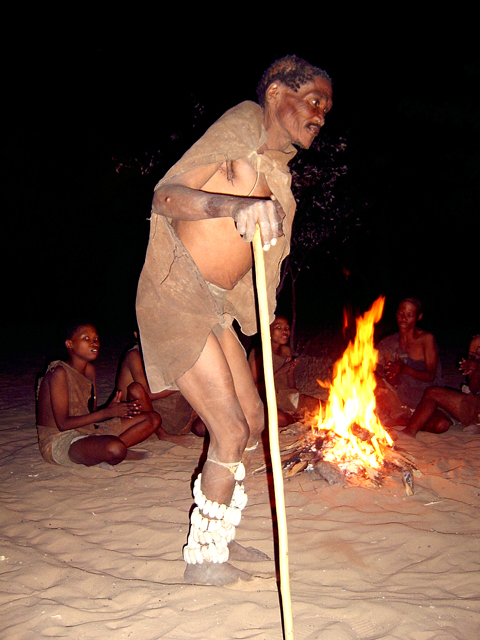
In order to understand the context of the current article, it is necessary to first review Silberbauer’s description of the G/wi healing dances. The anthropologist writes that the G/wi perform exorcising dances to try and dissipate tensions and to restrain the spread of conflicts. They believe that one of their gods, G//awama, a mean-spirited deity, sometimes throws down tiny slivers of wooden arrows which infect the people with evil.
When a band fills with dissensions and tempers become short, the people may decide to hold a dance that night. The dances usually take a lot of time, perhaps the entire night, so not everyone will be enthusiastic. But the initiative may start with men or women, young or old, and if enough people are convinced that they need the healing provided by a dance, they will start one. The rest of the band normally joins in.
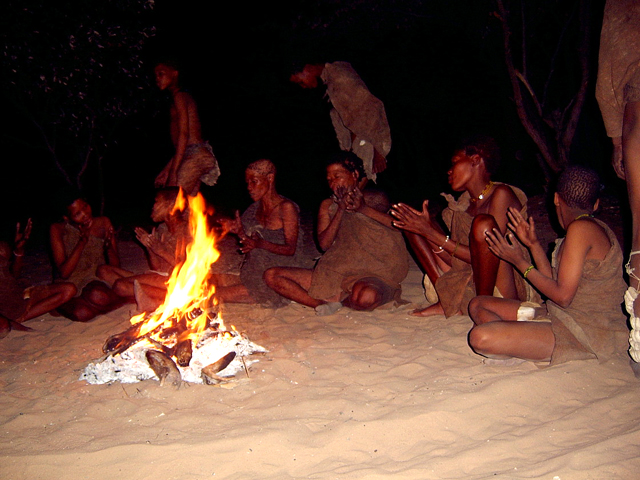
The dance begins with the women and girls sitting around a small fire clapping in complex rhythms and singing shrill songs. The men dance in a circle around them. The evil that the god has rained down on them has lodged in the women; as the men dance around the women, they touch their shoulders and draw it out. No one blames the women—it is just the way the god has arranged life. The male dancers sense the evil passing up into their bodies and soon the men doing the exorcising will start collapsing into cataleptic trances.
According to Silberbauer, the G/wi perform two different exorcising dances, the Iron Dance and the Gemsbok Dance. The former is distinguished from the latter by the fact that it is often used as a prelude to “surgery,” during which foreign objects may be removed from the bodies of the “patients.” During these performances, the men exhibit tremendous energy as they dance vigorously and stamp enthusiastically, the rattles around their ankles echoing loudly. The women sing and clap with equal vigor. Everyone exhibits a lot of emotional involvement as well as physical exertion during the dancing.
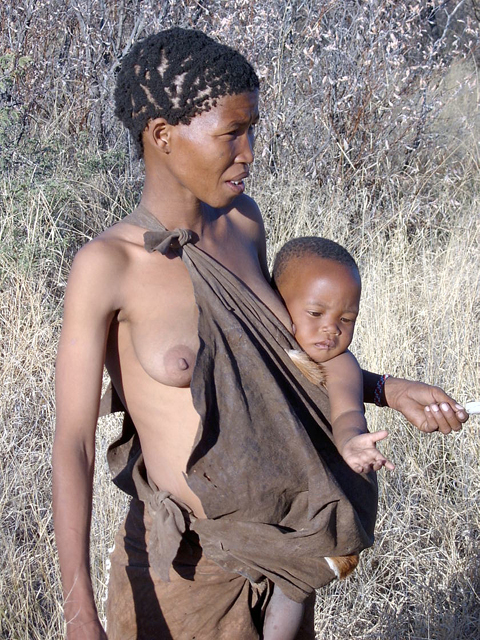
When the dancing is finished, the participants are not only physically worn down, they are also emotionally drained. Silberbauer adds, however, that they are also “markedly more relaxed, cheerful, and confidant (p.177).” The dancing has worked its healing magic. It has served to reinforce their dominant values, which are, he writes, cooperation, egalitarianism, and harmony.
According to the writer last week, this tradition of holding healing dances persists, despite the disruptions in the G/wi society, but they have added new dances to their repertoire. The journalist writing the story, Ricardo Kanono, bases his report on information provided by Kuela Kiema, a G/wi man who was born in Old Xade. Kiema studied music at the Molepolole College of Education and went on to get a bachelor’s degree from the University of Namibia. The first G/wi person to earn a college degree, he wrote a book entitled Tears for My Land.
According to Kiema, all G/wi (the writer uses an alternate name, “Khwe”) are either singers or dancers—no one is a spectator when they perform their dances and music. They have a large repertoire of poly-rhythmic dances and music, including numerous musical instruments and objects that produce sounds. They perform at many social functions.
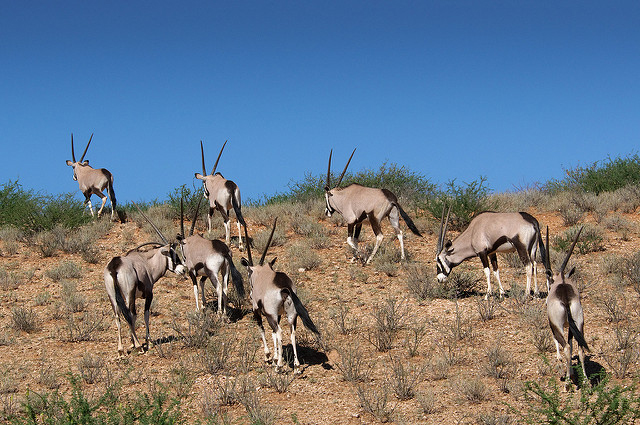
Kiema lists what he argues are three different traditional G/wi dances: the cqoo (gemsbok) dance and the qanu (iron) dance, the same healing trance dances described by Silberbauer in 1981. Kiema also mentions a third healing dance called the kh’oba. He describes the three not so much as healing but rather as religious dances that establish unity with the gods.
He describes some of the other G/wi dances that are not involved with their religious beliefs nor with healing. One, wokhuri cee, is purely designed as entertainment rather than for spiritual purposes. It focuses on telling a story, such as a young man who is courting a woman. The performances by the dancers depict their romantic encounters, his advances, her coquetry in response, and their adventures together. Other story lines followed by the wokhuri cee might involve gathering wild berries, a female ostrich protecting her offspring, or a giraffe preparing to flee when it sees a party of hunters approaching.
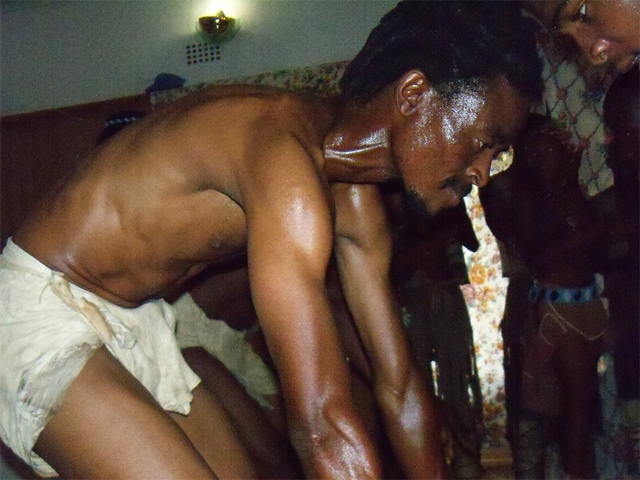
One of the wokhuri cee dances, popularized beginning in the late 1950s and early 1960s, was called a tsutsube, the title of a dance developed by people returning from the mines in South Africa who ventured into Molepolole and nearby villages. The word tsutsube has incorrectly become associated with a dance, and even with a healing dance, when the term should correctly be applied to the song that was sung by the returning mine workers. Kiema re-emphasizes that a tsutsube is not a healing dance.
Physical comedy becomes an art form in these dances—for instance, wokhuri means play and cee means song. While the words used in the three healing dances are limited to exclamations, a wokhuri cee uses a much larger vocabulary. Each dance is handed down from elders to younger people. Clueless about these traditions and conventions, unfortunately, dance troupes today often tend to corrupt both the conventions of the religious dances and of the wokhuri cee. Performances of supposedly traditional dances on President’s Day may incorporate aspects of the trance dances into what are, in essence, the wokhuri cee. The ancient religious traditions preserved by the dances may be presented as entertainment.
Keikabile Mogodu, who heads the Khwedom Council, laments this type of corruption and misrepresentation of G/wi traditions. In one President’s Day competition, for instance, a dancer totally misrepresented their culture by using the skin of a python. According to Mr. Mogodu, this was a totally inappropriate prop since the G/wi have never used snakes in their healing rituals.
While the news story does not say so directly, it suggests that the G/wi still cherish their healing ritual dances and perhaps, at least by implication, they may still accept the need to preserve harmony and peacefulness in their traditional ways.